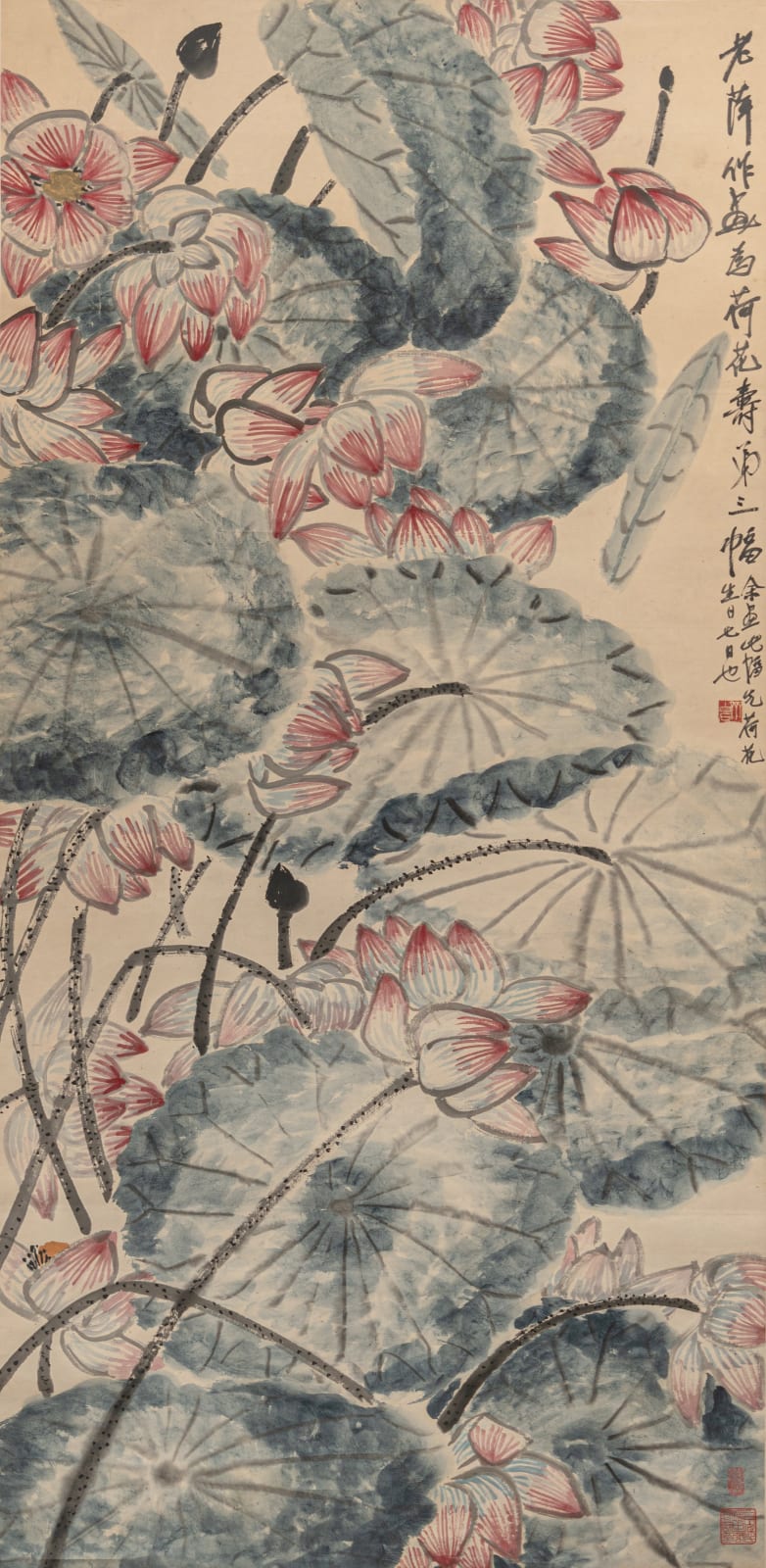-
作品

Qi Baishi
Lotus of Longevity 荷花壽ink and color on paper, hanging scroll53 x 26 in
134.6 x 66 cmCopyright The ArtistThe lotus flower has been a beloved theme in Chinese literati painting for centuries, largely inspired by Zhou Dunyi’s “Ode to the Lotus” from the Northern Song Dynasty. In this...The lotus flower has been a beloved theme in Chinese literati painting for centuries, largely inspired by Zhou Dunyi’s “Ode to the Lotus” from the Northern Song Dynasty. In this classical text, the lotus symbolizes purity, integrity, and noble character, representing the ideals and virtues cherished by Chinese scholars and artists.
This painting by Qi Baishi is a rare example of his depiction of lotus flowers from his early career. Unlike his later works, which often featured withered or decaying lotuses, this piece showcases a pond brimming with vibrant, blooming flowers. Qi Baishi uses rich blues and pinks to bring the scene to life, with intertwined stems and leaves adding to the lush, lively composition. This painting reflects Qi Baishi’s aesthetic sensibilities during a distinct period of his artistic journey.
In our current exhibition, the lotus theme is richly explored through various works. Although each piece centers on the lotus flower, every artist brings their unique style and interpretation. This variety highlights the personal expression that has always been at the heart of literati painting and underscores its importance in Asian expressionism.
荷花作为文人画最重要的母题之一,其来源于北宋周敦颐的《爱莲说》,在此文中作者以莲花象征纯洁、正直和高尚品德,来代表中国文化中的文人理想与美德。这一幅齐白石早年荷花是非常罕见的齐白石画荷的一种。与他中晚期大部分枯荷、残荷不同,本幅用花青与胭脂画出满塘盛开的荷花,中间穿插花茎与荷叶,传达了齐白石在特定绘画阶段的审美。此母题在本次展览中也有丰富的体现,虽然都是荷花,但是每个艺术家所表现出来的风格与意境如此的不同,传递了文人画自其最开始就是个人风格的终极体现,也是亚洲表现主义最核心的表达之一。
展览
2024 Transcultural Dialogues: The Journey of East Asian Art to the West, Fu Qiumeng Fine Art, New York, USA
订阅邮件
* denotes required fields
We will process the personal data you have supplied to communicate with you in accordance with our Privacy Policy. You can unsubscribe or change your preferences at any time by clicking the link in our emails.

